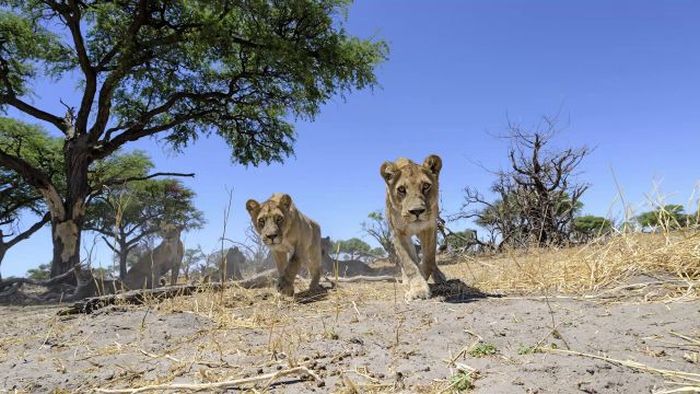|
|
Close Lions Photos By Chris McLennan, Botswana
|
Visually, the male lion is highly distinctive and is easily recognized by its mane. The lion, particularly the face of the male, is one of the most widely recognized animal symbols in human culture. Depictions have existed from the Upper Paleolithic period, with carvings and paintings from the Lascaux and Chauvet Caves, through virtually all ancient and medieval cultures where they once occurred. It has been extensively depicted in sculptures, in paintings, on national flags, and in contemporary films and literature.
Etymology
The lion's name, similar in many Romance languages, is derived from the Latin leo; and the Ancient Greek λέων (leon). The Hebrew word לָבִיא (lavi) may also be related, as well as the Ancient Egyptian rw. It was one of the many species originally described, as Felis leo, by Linnaeus in his eighteenth century work, Systema Naturae. The generic component of its scientific designation, Panthera leo, often is presumed to derive from Greek pan- ("all") and ther ("beast"), but this may be a folk etymology. Although it came into English through the classical languages, it shows a striking resemblance to Sanskrit pundarikam "tiger", which in turn may come from pandarah "whitish-yellow".
|
|









